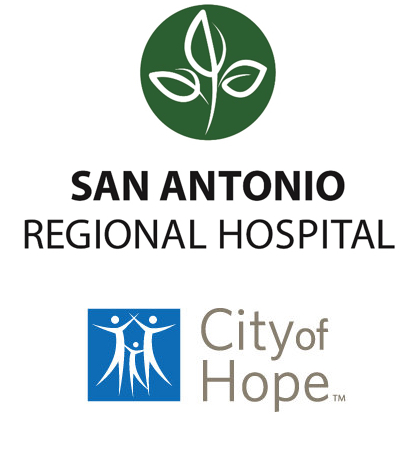The facility, which will be developed in partnership with the City of Hope, will give Inland Empire residents access to quality cancer care. It’s expected to open by the end of next year.
One of the world’s most renowned cancer treatment centers is about to set up shop in the Inland Empire.
City of Hope in Duarte, a not-for-profit hospital, research center and graduate medical school, has partnered with San Antonio Regional Hospital in Upland to establish a major cancer treatment center there.
That agreement, announced Feb. 1, calls for both medical facilities to develop a cancer clinic on the San Antonio Regional campus that will provide four major categories of cancer treatment: radiation, medical and surgical oncology and chemotherapy.
The treatment center will also conduct clinical trials, in which new treatments are tested for possible use, and clinical research.
Officials began negotiating the agreement about one year ago, said Heidi Hebson, vice president of business development for City of Hope.
“San Antonio Regional wanted to upgrade its cancer treatment, which it needs to do, and we want to establish a presence in the Inland Empire,” Hebson said. “From that point we were able to come to an agreement.”
Final cost of the project has not been announced, but City of Hope plans to spend $30 million toward its development, Hebson said.
Doctors from the City of Hope – one of 47 comprehensive cancer treatment centers in the United States, according to the National Cancer Institute – will provide all of the new facility’s clinical leadership, including directors for all of its oncology departments.
The facility will be located in San Antonio Regional’s ambulatory center, which is being developed across from the hospital’s main campus. Plans call for City of Hope to occupy one floor of the two-story building, San Antonio Regional the other floor.
The partnership’s primary goal is to give Inland Empire residents a full range of cancer treatment in their own community, said Vince Jensen, City of Hope’s chief administrative officer.
“People will no longer have to drive to Duarte, or wherever, to get the help they need,” Jensen said. “That’s something the Inland Empire doesn’t have now.”
During the past several years, San Antonio Regional has spent about $160 million on several major expansion projects, including construction of a patient tower and a larger emergency room, said Harris Koenig, the hospital’s president and chief executive officer.
The cancer-treatment center, which is expected to be finished by the end of 2018, is an extension of those efforts, Koenig said.
“This is going to provide comprehensive cancer treatment, which we’ve needed for long time,” said Koenig, who has been in charge of San Antonio Regional since 2011. “People out here should not have to travel to Los Angeles, or the west side, to get the treatment they need.”
Getting more comprehensive cancer treatment at San Antonio Regional was one of the first issues that came up during a recent meeting in which hospital and community officials discussed ways to make hospital more responsive to the community, Rancho Cucamonga Mayor L. Dennis Michael said.
“I think this is very needed,” said Michael, who participated in that meeting. “Its overdue, and it’s going to help everyone in San Bernardino County.”
Upland resident Barbara Jo Kirshbaum, who lost her husband in 2010 to a rare form of esophageal cancer, said the Inland Empire desperately needs a facility like the one planned for San Antonio Regional.
“Most of his treatment was at UCLA,” said Kirshbaum, a family therapist who now spends much of her time participating in cancer walks and raising money for cancer care. “If you have good facilities here, I’m sure people will take advantage of it.”
City of Hope plans to publicize the new facility with a series of events between now and the facility’s opening, Hebson said.
The partnership doesn’t mean San Antonio Regional, which offers comprehensive medical and surgical treatments and has been in existence for 109 years, hasn’t done well by its cancer patients, Hebson added
“They’re an outstanding hospital and they do outstanding work,” Hebson said. “We’re just going to make more treatments available, and we’re going to put some of the best cancer physicians in the world in the [Inland Empire] community.”
 IE Business Daily Business news for the Inland Empire.
IE Business Daily Business news for the Inland Empire.


